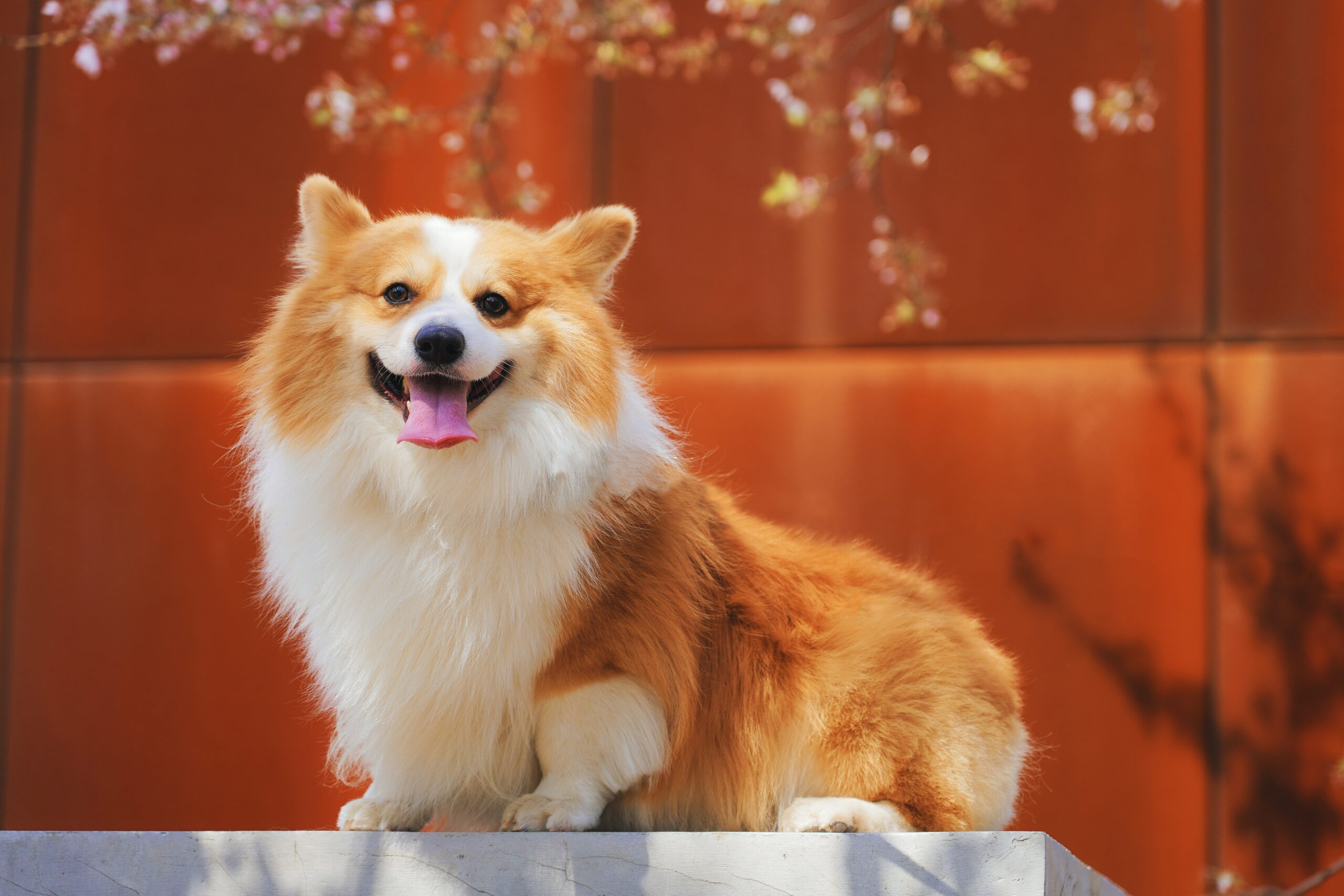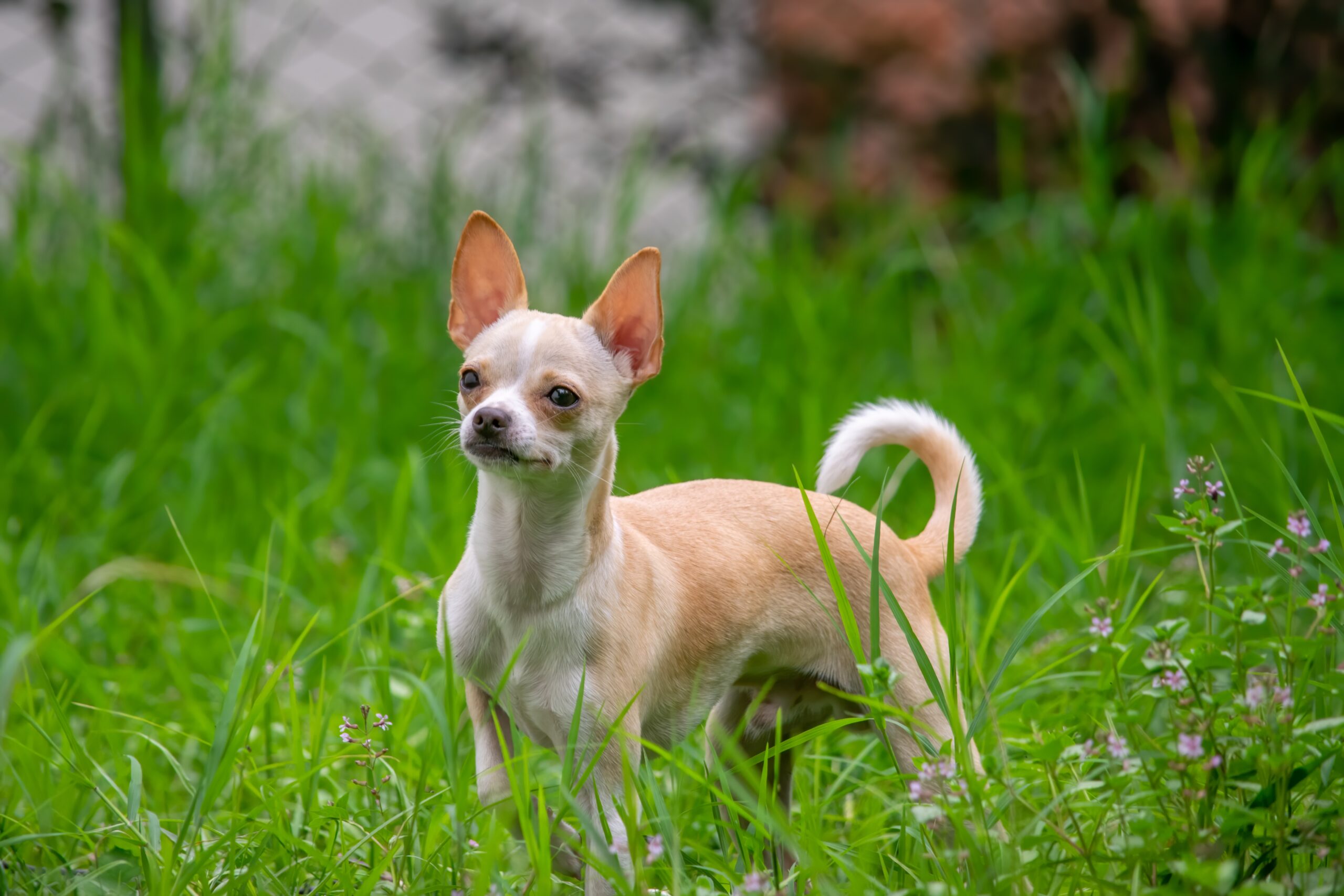Pets
10 Essential Tips for Taking Care of a Fat Chihuahua

Learn what you can do to help your fat Chihuahua. Find out what you can do, from dietary tweaks to exercise, for the well-being of your four-legged pet. Bringing a Chihuahua into your house will change your life for the better. The love and happiness they provide outweighs their little stature. But if your Chihuahua is on the plump side, you need to pay extra attention to their health. In this detailed manual, we’ll investigate the topic of fat Chihuahuas and provide suggestions for ensuring your pet’s health.
Fat Chihuahua: Understanding the Issue
What Causes Obesity in Chihuahuas?
Chihuahuas may easily gain weight due to inactivity, improper food, and hereditary factors. Early detection is key to avoiding more serious health problems.
The Dangers of Obesity
Joint troubles, diabetes, and a shortened lifespan are just a few of the consequences of Chihuahua obesity. The health of your pet depends on your rapid attention to this issue.
Recognizing the Signs of a Fat Chihuahua
Physical Indicators
- Gaining a lot of weight
- Movement impairments
- Having no defined muscles
Behavioral Cues
- Decreased levels of activity
- A lack of interest in playing
- Anger and hostility rise
Tailored Diet for a Healthy Chihuahua
Portion Control
Feeding your Chihuahua the appropriate quantity of food is essential. For specific feeding advice tailored to your pet’s age, weight, and activity level, talk to your doctor.
Nutrient-Rich Meals
Select a premium dog food that is full of healthy ingredients like lean protein and minerals. You should concentrate on providing adequate nourishment and steer clear of empty-calorie indulgences.
Healthy Snacking
Eat more apples and carrots and other healthy produce. These calorie-conscious choices are nutrition dense and satisfyingly crunchy.
Exercise Regimen for a Happy Chihuahua
Daily Walks
Maintain a healthy weight and mental state in your Chihuahua by taking him or her on daily walks. Exercise at least 30 minutes every day.
Interactive Playtime
Play games with your pet, such as fetch and hide-and-seek. This has two purposes: it helps you burn fat and it keeps your mind active.
Incorporating Agility Training
Construct a little agility course in the garden to get the whole family moving. Keeping your Chihuahua busy in this manner may be both enjoyable and productive.
Regular Veterinary Check-ups
Importance of Check-ups
To keep tabs on your Chihuahua’s weight and health, it’s important to take him or her in for checkups on a regular basis. You may get individualised recommendations from your vet and have them help you spot problems early on.
Addressing Health Concerns
If your Chihuahua is already overweight, your veterinarian can design a weight-loss programme that will work for your dog.
Conclusion
A healthy and happy Chihuahua is worth the time and effort it takes to care for an overweight one. If you follow these guidelines, your Chihuahua will have a far better chance of living a long and happy life.
FAQs (Frequently Asked Questions)
Can genetics play a role in a fat chihuahua?
If your Chihuahua is overweight, your doctor may create a weight-loss plan that is tailored to your dog’s needs.
Are there specific breeds more prone to obesity?
Chihuahuas and other little breeds are more likely to develop obesity than larger ones because of their diminutive stature.
Is it possible for a Chihuahua to lose weight too quickly?
Rapid weight reduction is risky, it’s true. A slow and carefully monitored weight reduction regimen is required.
What are some low-impact exercises suitable for fat chihuahua?
Fat chihuahua may benefit greatly from low-impact workouts like swimming and moderate, supervised play sessions.
How can I monitor my Chihuahua’s progress in losing weight?
Checking up on their weight and activity levels on a regular basis, as well as recording what they eat, can give you an idea of how they’re doing.
Can emotional well-being affect a Chihuahua’s weight?
Yes, worry and stress might cause you to eat too much. Creating a safe and secure home is crucial to their development and well-being.
Pets
George Foreman Wife: A Look at the Woman Behind the Boxing Legend

George Foreman Wife! Step into the ring of love and companionship as we take a closer look at the woman who captured boxing legend George Foreman’s heart. Join us on a journey through their relationship, challenges faced, triumphs celebrated, and the lasting impact they’ve made together. Get ready to meet Mary Joan Martelly – the powerhouse behind one of sports’ most iconic figures!
Meet Mary Joan Martelly: The Woman Who Stole George’s Heart
When it comes to boxing legend George Foreman, many fans are familiar with his impressive career in the ring. But behind every great man is a supportive partner, and for George, that person is Mary Joan Martelly.
Mary Joan isn’t just any ordinary woman – she’s the one who captured George’s heart and has been by his side through thick and thin. Their love story is one for the ages – a tale of two people from different worlds coming together against all odds.
From their first meeting to walking down the aisle, Mary Joan has been George’s rock, offering unwavering support and love. Despite facing challenges as an interracial couple in the 1970s, their bond only grew stronger over time.
Together, they have weathered numerous storms and celebrated countless triumphs. Mary Joan’s presence in George’s life has undoubtedly played a significant role in shaping him into the man he is today.
A Timeline of Their Relationship: From Meeting to Marriage
It all started when George Foreman met Mary Joan Martelly at a church in California. Sparks flew as they got to know each other, bonding over shared values and a deep connection. Their relationship blossomed quickly, with George falling head over heels for the charming Mary Joan.
After dating for some time, George knew she was the one he wanted to spend his life with. In 1985, amidst their busy lives and George’s boxing career, they decided to tie the knot in a beautiful ceremony surrounded by loved ones. The love between them was palpable, evident in every glance and touch exchanged on that special day.
As husband and wife, George and Mary Joan faced challenges but stood strong together through it all. Their bond only grew stronger with each passing year as they navigated life’s ups and downs hand in hand.
Challenges Faced as an Interracial Couple in the 1970s
In the 1970s, George Foreman and Mary Joan Martelly faced challenges as an interracial couple. Society’s narrow views often cast shadows on their relationship, but their love shone through. Despite the prejudices they encountered, they stood strong together.
Navigating a world that wasn’t always accepting of their union required resilience and unwavering commitment. Their bond was tested by external pressures, but it only grew stronger in the face of adversity.
Their love transcended societal norms, proving that true connection knows no boundaries. Together, they defied expectations and embraced each other fully.
Through understanding and unity, George and Mary Joan paved the way for a more inclusive future where love conquers all differences.
Mary Joan’s Support for George’s Boxing Career
Mary Joan Martelly, the woman behind boxing legend George Foreman, played a pivotal role in supporting her husband’s illustrious career. From the early days of their relationship, Mary Joan stood by George, offering unwavering encouragement and love as he climbed the ranks in the boxing world.
As George faced opponents in the ring, Mary Joan was there every step of the way, providing emotional support and strength during both victories and defeats. Her presence ringside served as a source of comfort for George, knowing that his biggest cheerleader was always by his side.
Despite the challenges and demands of George’s boxing career, Mary Joan remained a steadfast pillar of support. She understood the sacrifices required for him to succeed and selflessly dedicated herself to ensuring his well-being both inside and outside of the ring.
Mary Joan’s unwavering dedication to George’s success not only strengthened their bond but also contributed significantly to his achievements in boxing. Their partnership exemplifies true teamwork and demonstrates how love and support can propel someone towards greatness.
Life After Retirement: How They’ve Built a Strong Marriage for Over 35 Years
After retiring from boxing, George Foreman and his wife Mary Joan Martelly focused on building a strong foundation for their marriage. They cherished spending quality time together, whether it was traveling the world or just enjoying simple moments at home.
Their shared values of faith, family, and giving back to the community have been instrumental in keeping their relationship thriving over the years. Despite the challenges they faced as an interracial couple in the 1970s, they stood by each other’s side with unwavering support and love.
George and Mary Joan’s commitment to communication and mutual respect has been key to navigating life’s ups and downs post-retirement. They continue to prioritize each other’s happiness while also staying true to their individual passions and pursuits.
Through it all, their enduring bond serves as an inspiration for others seeking a lasting partnership built on trust, understanding, and unwavering dedication.
The Impact of Their Philanthropy Work Together
George Foreman and his wife, Mary Joan Martelly, are not only known for their successful marriage but also for their impactful philanthropy work together. The couple has dedicated their time and resources to various charitable causes, making a positive difference in the lives of many individuals. From supporting underprivileged communities to advocating for children’s welfare, George and Mary Joan have been actively involved in giving back to society.
Their philanthropic efforts extend beyond just donating money; they often engage directly with the communities they aim to help. Whether it’s organizing fundraisers or volunteering at local charities, the Foremans are hands-on in their approach towards making a difference. Their commitment to helping others has made them role models for many aspiring philanthropists.
Through their joint initiatives, George and Mary Joan have inspired others to join them in creating a more compassionate and inclusive world. Together, they have shown that through unity and compassion, real change can be achieved. Their impact on society serves as a testament to the power of generosity and kindness.
Conclusion
As we wrap up this journey into the life of George Foreman and his wife, Mary Joan Martelly, it’s clear that their love story is one for the ages. From humble beginnings to international fame, they have stood by each other through thick and thin. Their relationship has weathered challenges and triumphs alike, proving that love knows no bounds.
Through their philanthropic endeavors, George and Mary Joan have made a lasting impact on communities around the world. Their commitment to giving back shows a depth of character that goes beyond boxing rings and headlines. Together, they have shown what true partnership looks like – supporting each other’s dreams and making a difference together.
As we reflect on their journey together, one thing is certain: George Foreman’s success in the ring is only part of his legacy. The love story between him and Mary Joan is equally inspiring – a testament to resilience, passion, and unwavering support. And as they continue to write new chapters in their lives together, we can’t wait to see what the future holds for this remarkable couple.
FAQs: George Foreman Wife
How did George Foreman and Mary Joan Martelly (George Foreman Wife) meet?
George Foreman and Mary Joan Martelly met at a dance in California in the 1970s.
What challenges did they face as an interracial couple during that time?
As an interracial couple in the 1970s, George and Mary Joan faced discrimination and prejudice from society.
How long have they been married?
George Foreman and Mary Joan Martelly have been happily married for over 35 years.
What philanthropy work do they engage in together?
The couple has worked together on various philanthropic endeavors, including founding the George Foreman Youth Center to help underprivileged youth.
What is the key to their strong marriage after all these years?
The key to their enduring marriage seems to be love, respect, support, and a shared commitment to giving back to their community.
Pets
Dehydrated Dog Food: Unlocking the Benefits of Nutrient-Rich Formulas

Is your furry friend in need of a diet upgrade? Look no further than dehydrated dog food! Packed with nutrients and flavor, this innovative pet food option is taking the canine world by storm. Let’s dive into the benefits, ingredients, and considerations of dehydrated dog food to help you make the best choice for your beloved companion.
How is Dehydrated Dog Food Made?
Dehydrated dog food is crafted through a gentle process that involves removing moisture from fresh ingredients while preserving their nutrients. The journey starts with high-quality meats, fruits, and vegetables sourced for their nutritional value. These ingredients are then carefully chopped and mixed to create a balanced blend of flavors and nutrients.
Next comes dehydration, where the mixture is slowly cooked at low temperatures to remove water content without compromising the essential vitamins and minerals. This slow drying process helps retain the natural goodness of the ingredients, resulting in a nutrient-rich final product.
Once fully dehydrated, the food is cooled and broken down into bite-sized pieces suitable for easy serving. The end result? A wholesome meal packed with all the essential nutrients your furry friend needs to thrive.
The Benefits of Dehydrated Dog Food
Dehydrated dog food offers a myriad of benefits for your furry friend. One major advantage is the preservation of nutrients during the dehydration process, ensuring that essential vitamins and minerals are retained for your pet’s health.
Additionally, dehydrated dog food is convenient and has a longer shelf life compared to fresh foods, making it ideal for busy pet owners or those looking to stock up on nutritious meals for their dogs.
Furthermore, the lightweight nature of dehydrated dog food makes it easy to store and transport, whether you’re going on a road trip or simply need to keep your pup fed while on-the-go.
Moreover, many dogs find the taste and texture of dehydrated food appealing, leading to higher consumption rates and potentially reducing picky eating behaviors.
Incorporating dehydrated dog food into your pet’s diet can be a simple yet impactful way to provide them with balanced nutrition and support their overall well-being.
Common Ingredients in Dehydrated Dog Food and their Nutritional Benefits
Dehydrated dog food is packed with a variety of wholesome ingredients that offer numerous nutritional benefits to your furry friend. Common ingredients found in dehydrated dog food include high-quality meats such as chicken, beef, and fish. These protein sources help support muscle development and overall health.
Additionally, fruits and vegetables like sweet potatoes, peas, blueberries, and kale are often included in dehydrated dog food recipes. These ingredients provide essential vitamins, minerals, and antioxidants that contribute to a well-balanced diet for your pup.
Healthy fats from sources like coconut oil or flaxseed can also be present in dehydrated dog food formulations. These fats are crucial for skin and coat health as well as providing energy for your pet’s daily activities.
The combination of these nutritious ingredients in dehydrated dog food helps ensure that your canine companion receives a complete and balanced meal with all the essential nutrients they need to thrive.
Choosing the Right Dehydrated Dog Food for Your Pet
When it comes to choosing the right dehydrated dog food for your furry friend, there are a few factors to consider. Start by looking at the ingredient list – opt for formulas with high-quality proteins like chicken, turkey, or fish as the first few ingredients. These proteins will provide essential amino acids for your dog’s muscle health.
Next, check for fruits and vegetables in the mix. Ingredients like sweet potatoes, blueberries, and spinach can offer a variety of vitamins and minerals to support your pet’s overall well-being. Avoid artificial additives such as preservatives or colors that may not be beneficial for your dog’s digestion.
Consider your dog’s specific dietary needs – whether they require grain-free options or have sensitivities to certain ingredients. Consult with your veterinarian to ensure you’re selecting a dehydrated dog food that meets all of your pet’s nutritional requirements.
Transitioning your Dog to a Dehydrated Diet
Transitioning your furry friend to a dehydrated diet can be an exciting new adventure for both of you. To make the switch smoothly, start by gradually introducing small amounts of the dehydrated food into their current meals. This will allow your dog’s digestive system to adjust slowly without causing any upset stomachs.
Monitor your pet during the transition period and observe how they respond to the new diet. Some dogs may take to it right away, while others might need more time to get used to the change in texture and taste. Remember, patience is key when making dietary changes for your pup.
As you increase the proportion of dehydrated food in their meals, pay attention to any signs of allergies or intolerances that may arise. It’s essential to consult with your veterinarian if you notice any concerning symptoms during this process.
By taking a gradual and mindful approach, you can ensure that your dog transitions smoothly and comfortably to their nutrient-rich dehydrated diet. And before you know it, they’ll be enjoying all the benefits that come with this wholesome meal option!
Potential Concerns and Precautions when Feeding Dehydrated Dog Food
When it comes to feeding your furry friend dehydrated dog food, there are a few potential concerns and precautions to keep in mind. One important consideration is the issue of hydration. Since dehydrated food has had most of its moisture removed, it’s crucial to ensure that your pup is drinking enough water throughout the day.
Another concern to be aware of is the risk of contamination. Make sure you store the dehydrated food properly in a cool, dry place away from sunlight to prevent spoilage or mold growth. Additionally, always check the expiration date on the packaging before serving it to your dog.
It’s also essential to monitor your dog’s reaction when transitioning them onto a new diet. Keep an eye out for any signs of digestive upset or allergies and consult with your veterinarian if necessary.
By being proactive and attentive, you can help mitigate these concerns and ensure that your pup enjoys all the benefits of a nutrient-rich dehydrated diet!
Conclusion
As we’ve delved into the world of dehydrated dog food, it’s clear that this type of diet offers a myriad of benefits for our furry companions. From nutrient retention to convenience and variety, dehydrated dog food provides a wholesome option for pet owners looking to enhance their dogs’ nutrition.
By understanding how dehydrated dog food is made and the common ingredients used in these formulas, you can make an informed decision when choosing the right diet for your pet. Transitioning your dog to a dehydrated diet may require some patience and adjustments but can ultimately lead to improved health outcomes.
While there are potential concerns and precautions to be aware of when feeding dehydrated dog food, proper research and consultation with veterinarians can help mitigate any risks. Remember, every dog is unique, so finding the right balance in their diet is key.
Incorporating dehydrated dog food into your pet’s routine may just be the change needed for optimal health and well-being. Explore different options available on the market to find what works best for your canine companion.
FAQs
Can all dogs eat dehydrated dog food?
Dehydrated dog food is suitable for most dogs, but it’s always best to consult with your veterinarian before making any dietary changes, especially if your dog has specific health concerns or dietary restrictions.
How long does dehydrated do food last?
Dehydrated dog food typically has a longer shelf life compared to traditional kibble or wet food. Be sure to check the expiration date on the packaging and store it in a cool, dry place away from direct sunlight for optimal freshness.
Is dehydrated dog food more expensive than other types of dog food?
While dehydrated dog food may have a higher upfront cost, you may end up saving money in the long run due to its nutrient-dense nature and the fact that you can feed smaller portions compared to lower-quality foods.
Can I mix dehydrated dog food with other types of pet foods?
Yes, you can mix dehydrated dog food with other types of pet foods like canned or raw diets. Just be mindful of portion sizes and ensure that the overall nutritional balance is maintained for your furry friend.
How do I know if my dog is thriving on a dehydrated diet?
Monitor your pup’s energy levels, coat condition, digestion, and overall well-being after transitioning them to a dehydrated diet. If you notice positive changes in their health and vitality, then they are likely thriving on this nutrient-rich formula.
Pets
Why Do Chihuahuas Shake: Unveiling the Mystery

Why Do Chihuahuas Shake! Learn the science behind the Chihuahua’s peculiar trembling. Learn more about the fascinating habits of these little friends, from their innate tendencies to any health issues they may have. Chihuahuas, despite their lovable little stature and large personality, have a unique tendency that frequently baffles their owners. In this detailed manual, we’ll explore all the potential causes of this behavior in Chihuahuas. We’ll investigate several causes, from genetics to health problems, for why these little dogs can’t sit still for very long.
Understanding the Innate Instincts
The Evolutionary Quirk
Chihuahuas originate from modern canine offshoots of ancient Mexican canines called Techichis. The Aztecs and Toltecs held these little canines in high esteem, believing them to be both magical and a faithful friend. It is hypothesized that this peculiar habit evolved as a means of controlling core body temperature in the hot environments of Mexico.
Sensitivity to Environment
Because of their advanced neurological system, Chihuahuas are more attuned to their environments than other dog breeds. Because of this sensitivity, the slightest stimulus, such as excitement, worry, or even cold, might set off trembling.
The Emotiona3l Quandaries
Nervous Nellies
It’s common knowledge that Chihuahuas are nervous, fearful dogs. They get very anxious if there is a change in routine, they are placed in a new location, or they are introduced to new people. The key to calming this neurotic temperament is understanding and creating a quiet, safe atmosphere.
Excitement Overload
Chihuahuas have such a high level of excitement that their little bodies can hardly handle it. It’s a tribute to their character that this causes them to shake in an endearing way.
Potential Health Concerns
Hypoglycemia: The Blood Sugar Rollercoaster
Chihuahuas are predisposed to hypoglycemia, or low blood sugar, because of their small stature. Seizures, weakness, and shaking are all possible outcomes of this condition. Eating on a regular schedule and maintaining a healthy diet are critical in controlling this illness.
Dental Issues
Many people don’t realize that if they have oral issues, it might cause pain and result in uncontrollable trembling. Help them keep their pearly whites by taking them to the dentist regularly and providing them with safe chew toys.
Conclusion
In conclusion, there is no one cause for why do chihuahuas shake rather, the behavior is a complex interplay of evolutionary characteristics, emotional sensitivity, and probable physical illness. You can help your Chihuahua live a long and healthy life, shaking only when necessary, if you take the time to learn about and provide for its unique needs.
Why Do Chihuahuas Shake FAQs
Can Chihuahuas outgrow their shaking behavior?
The frequency with which a Chihuahua shakes often decreases as the dog ages and becomes familiarity with its surroundings. However, their inherent temperament may cause them to continue shaking to some degree.
Should I be concerned if my Chihuahua shakes excessively?
While some trembling is to be expected from time to time, persistent trembling might point to a more serious problem. If you’re concerned about how often your Chihuahua is shaking, you should make an appointment with a vet.
Can I use clothing to help regulate my Chihuahua’s body temperature?
Most definitely, especially if you live in a colder environment or if your Chihuahua is easily affected by temperature swings. The warmth and coziness of a well-fitting sweater or garment.
Are there specific situations that trigger shaking in Chihuahuas?
Yes, being in a strange environment or coming into contact with new people or animals may cause trembling. Your Chihuahua may be desensitized to these conditions via a combination of gradual exposure and positive reward.
Can I train my Chihuahua to shake less?
You can certainly assist your Chihuahua gain self-assurance and reduce its tendency to shake with time and praise. Training from professionals or attending behavior modification courses may also help.
When should I seek veterinary care for my shaking Chihuahua?
A rapid increase in shaking, especially if accompanied by other worrying signs such as lethargy, lack of appetite, or strange behavior, warrants immediate veterinary attention.
-

 Entertainment4 months ago
Entertainment4 months agoFutbolear: The Fusion of Football and Lifestyle
-

 Pets10 months ago
Pets10 months agoChihuahua Plays Dead: A Comprehensive Guide
-

 News2 months ago
News2 months agoHow to Watch the World Cup for Free: A Comprehensive Guide
-

 Finance10 months ago
Finance10 months agoHow to Buy Ethereum on eToro: A Comprehensive Guide
-

 Entertainment8 months ago
Entertainment8 months agoSeal Team Season 7: An Action-Packed Journey
-

 Fashion4 months ago
Fashion4 months agoKiddies Braid Hairstyles: A Complete Guide
-

 Fashion4 months ago
Fashion4 months agoHeatless Curls: Effortless Waves Without the Damage
-

 News4 months ago
News4 months agoChina War: Unraveling the Complexities
